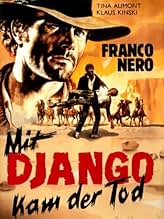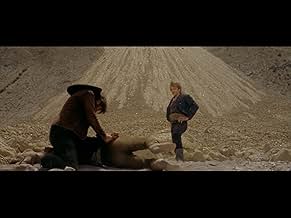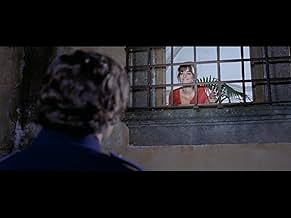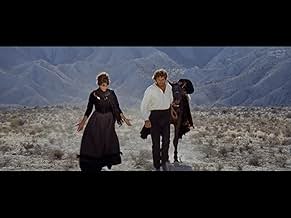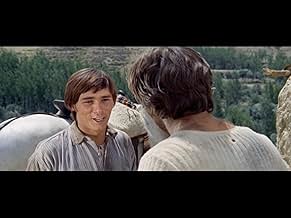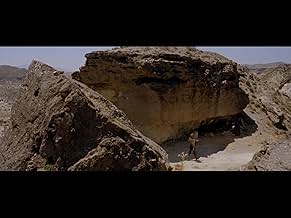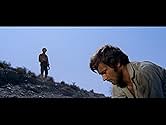L'Homme, l'Orgueil et la Vengeance
Titre original : L'uomo, l'orgoglio, la vendetta
- 1967
- Tous publics
- 1h 41min
NOTE IMDb
5,9/10
792
MA NOTE
Ajouter une intrigue dans votre langueA stalwart Spanish soldier turns to a life of crime to prove his love for a mysterious and promiscuous gypsy woman.A stalwart Spanish soldier turns to a life of crime to prove his love for a mysterious and promiscuous gypsy woman.A stalwart Spanish soldier turns to a life of crime to prove his love for a mysterious and promiscuous gypsy woman.
Klaus Kinski
- Garcia
- (as Klaus Kinsky)
Guido Lollobrigida
- Dancairo
- (as Lee Burton)
Nina De Padova
- Factory Worker
- (as Anna De Padova)
Giovanni Ivan Scratuglia
- Soldier Arresting Carmen
- (as Ivan Giovanni Scratuglia)
Hans Albrecht
- Miguel, Garcia's Companion
- (non crédité)
Luisa De Padova
- Street Girl
- (non crédité)
Rex Gildo
- Soldier Arresting Carmen
- (non crédité)
Alba Maiolini
- Factory's Supervisor
- (non crédité)
Histoire
Le saviez-vous
- AnecdotesMan, Pride and Vengeance (Italian: L'Homme, l'Orgueil et la Vengeance (1967), German: Mit Django kam der Tod) is a 1967 Spaghetti Western film written and directed by Luigi Bazzoni and starring Franco Nero, Tina Aumont, and Klaus Kinski. It is a Western film adaptation of the novella Carmen by Prosper Mérimée, and is one of the few Westerns not only filmed, but also set in Europe.
- Versions alternativesThe German version was cut to 91 minutes and calls the main characters Django and Conchita.
- ConnexionsReferenced in Kathenas me tin trella tou... (1980)
Commentaire à la une
Intriguing hybrid adventure, as much a ripping yarn as a western.
Unredeemed human suffering, violence, lust and betrayal – this could be a spaghetti western inspired by Dostoevsky.
In a recent interview, Franco Nero contrasted the Hollywood western hero with the Italian spaghetti western hero:– the former is indeed a hero, while the latter is more a 'son-of-a-bitch'. Yet Nero plays no such 'son-of-a-bitch' role in this film. Trauma and tragedy are his lot. Nero's attitude to the marketing fixation with the 'Django' name was simply – 'It's their problem'. He maintains that he only ever made one 'Django' film, and it certainly was not this one, so don't be taken in by the German title of 'Mit Django kam der Tod' ('With Django Came Death').
It is hard to believe that such awesome landscapes exist within our very own EU (shot in Andalucia!). I particularly enjoyed the careful rationing of images of water, which contrasted so starkly with the bone-dry natural setting. The change of location from Spain to Mexico in the uncut German version gets away with murder. For example, one scene showing the longing for an escape from an outlaw's exile in the desert is expressed in some shot-reverse-shot images of a tortured gaze at flamingos taking off from a lake. The birds are fortunately native to both Spain and Mexico...
Gypsies too are native to both – though our Carmen (i.e. Django's 'Conchita' in the uncut German) would be a rather Spanish-looking gypsy for Mexico, were it not for the black mourning clothes she wears in remembrance of her mother. The Italian-to-German dubbing has been done to a high standard – no mean feat considering that the names of characters and locations have also been altered in the German. Soldiers of the Spanish Bourbon regime must have had uniforms that almost pass for those of the US Civil War – or can some military history hack out there expose the shameless German tampering ...?
Unredeemed human suffering, violence, lust and betrayal – this could be a spaghetti western inspired by Dostoevsky.
In a recent interview, Franco Nero contrasted the Hollywood western hero with the Italian spaghetti western hero:– the former is indeed a hero, while the latter is more a 'son-of-a-bitch'. Yet Nero plays no such 'son-of-a-bitch' role in this film. Trauma and tragedy are his lot. Nero's attitude to the marketing fixation with the 'Django' name was simply – 'It's their problem'. He maintains that he only ever made one 'Django' film, and it certainly was not this one, so don't be taken in by the German title of 'Mit Django kam der Tod' ('With Django Came Death').
It is hard to believe that such awesome landscapes exist within our very own EU (shot in Andalucia!). I particularly enjoyed the careful rationing of images of water, which contrasted so starkly with the bone-dry natural setting. The change of location from Spain to Mexico in the uncut German version gets away with murder. For example, one scene showing the longing for an escape from an outlaw's exile in the desert is expressed in some shot-reverse-shot images of a tortured gaze at flamingos taking off from a lake. The birds are fortunately native to both Spain and Mexico...
Gypsies too are native to both – though our Carmen (i.e. Django's 'Conchita' in the uncut German) would be a rather Spanish-looking gypsy for Mexico, were it not for the black mourning clothes she wears in remembrance of her mother. The Italian-to-German dubbing has been done to a high standard – no mean feat considering that the names of characters and locations have also been altered in the German. Soldiers of the Spanish Bourbon regime must have had uniforms that almost pass for those of the US Civil War – or can some military history hack out there expose the shameless German tampering ...?
- jspwordieitaly
- 12 oct. 2010
- Permalien
Meilleurs choix
Connectez-vous pour évaluer et suivre la liste de favoris afin de recevoir des recommandations personnalisées
- How long is Man, Pride & Vengeance?Alimenté par Alexa
Détails
- Durée1 heure 41 minutes
- Mixage
- Rapport de forme
- 2.35 : 1
Contribuer à cette page
Suggérer une modification ou ajouter du contenu manquant

Lacune principale
By what name was L'Homme, l'Orgueil et la Vengeance (1967) officially released in India in English?
Répondre
